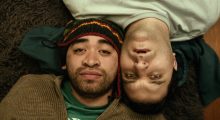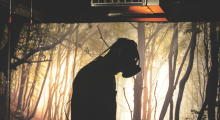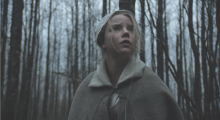Line Items
-
Your Film is Too Long: 11 Tips on How To Get Your Film to Its Correct Runtime

I know, it’s maddening. People watch 10-hour series that take five hours to get good, but your 101-minute comedy is too long. Michael Bay makes three-hour Transformers movies, but your 95-minute drama is too long. Critics love seven hours of Sátántangó, but your 18-minute short is too long. Sorry, but it’s probably true. I learned this the hard way on my first feature film, Jake. After our initial 118-minute cut, we proudly got it down to 104 minutes. We couldn’t cut a frame more! We locked picture and sent out our perfectly formed film to festivals. Final runtime? 88 minutes. […]
-
Disclosed: Producers and Therapists on Dealing with the Stress of a Demanding Profession

There’s a simple definition of producing that mostly has to do with developing and financing a production, overseeing the shoot, protecting a vision. But scratch a little deeper, and producers will open up with more personal responses. Producing is about love, for example — loving the movie, above all, and continuing to love it over the years and decades of its existence. Producing is about support — being everyone’s advocate, from the director to the actor to the crew. Producing is about protecting a vision, yes, but also assuaging the fears of partners who worry that that vision is too […]
-
From BTL to ATL: How I Went from Art Department Coordinator to Director

The production designer Kelly McGehee called me one afternoon. I had been a production PA on a film we had both worked on. She told me she was starting a new movie and asked if I knew any art department coordinators. I didn’t — in fact, I didn’t even know what one was. But like any ambitious young person I did what you do in that situation: I said, “I can do it.” Not knowing what Google was yet, I hung up and did what you used to do when facing questions such as this one: call an actual human […]
-
Projecting Outside the Echo Chamber

In the past decade, I have screened thousands of documentary festival submissions. That amounts to countless hours of observing — or, more often than not, being told about — the horrifying effects of war, discrimination, depression, censorship, animal slaughter, plastic bottles, shoddy reporting, asbestos and mountaintop removal. Befitting this past decade of “hope,” I have also been given the tools to fix those problems: a program I can donate to, a message to spread to my community, a website I can visit to learn more. Nearly every one of these films has failed to leave an impression. They don’t make […]
-
It’s Time for More Native Americans in Hollywood

“I’m just not going to be the Indian they want me to be.” — Sherman Alexie Native American culture is part of our everyday lives, from the Iroquois confederacy modeled in the U.S. Constitution to half of the U.S. states named in a Native language. It’s in our streets and cities, our sports teams, even the food we eat. Yet, Native people are rarely represented in the stories we see onscreen. Why is that? Well, there are several reasons. One is that America maintains a profound mythology about herself. You could say that she has her own “creation story,” starring the classic […]
-
A New Kind of Magic: Douglas Trumbull on Magi, HFR and Dynamic Frame Rates

With the passing of Douglas Trumbull, the great visual effects pioneer, we’re reposting Sam May’s 2017 article from Filmmaker’s Summer, 2017 print edition on his innovative late-career work on high-frame-rate cinema. –Editor You might not recognize the name Douglas Trumbull, but you will certainly recognize his work. He is the man behind the special effects of 2001: A Space Odyssey, Blade Runner and Close Encounters of the Third Kind, and also the director of Silent Running and Brainstorm. In recent years, he has dedicated himself to “figuring out the future of cinema.” The result: Magi cinema, a means of shooting […]
-
These Uncomfortably Exciting Times

I’m an eye. A mechanical eye. I, the machine, show you a world the way only I can see it. I free myself for today and forever from human immobility. I approach and pull away from objects. […] I creep under them. I move alongside a running horse’s mouth. I fall and rise with the falling and rising bodies. This is I, the machine, maneuvering in the chaotic movements, recording one movement after another in the most complex combinations. Freed from the boundaries of time and space, I co-ordinate any and all points of the universe, wherever I want them […]
-
Keystone Cop: Why 1.66 and 1.78 Aspect Ratios Are Often Misprojected (And How to Fix That)

Jackie, Fox Searchlight’s best hope for 2016 Oscar glory, will be improperly projected throughout the world. There will be the usual projection mistakes and corporate carelessness that have become the norm in today’s multiplexes, but Jackie’s 1.66 aspect ratio will be presented keystoned more often than not: instead of a narrow rectangle that is 1.66 times longer than tall, the tops of the image will either curve inward or outward in relation to the screen. It’s an easily corrected mistake that is being ignored because of laziness. Since most projection booths are devoid of projectionists who can fix the problem, […]
-
Pilot Checkride: How To Break Into Television Writing, Part Two

In the summer issue of this magazine, I wrote about how television is written and some of the ways that a screenwriter might break into writing for television — starting as an assistant in the writers’ room, fellowship programs, being hired directly to staff and selling a pitch or a pilot. As I noted in conclusion, whichever route you take, it all starts with a great pilot — that’s the sample that your agents will use to put you up for staffing, that’s the usual application piece for fellowships, and that’s even what assistants submit for consideration. So what exactly […]
-
Playing the Long Game: Producers on Sustaining a Career in Independent Film

When legendary producer and studio executive Robert Evans penned his autobiography — later adapted into a documentary — he picked a telling title: The Kid Stays in the Picture. You would think that after producing films like Chinatown and Urban Cowboy, Evans could happily rest on his laurels, but his book’s title, with its defiant use of the present tense, speaks to the ambitions and anxieties affecting every filmmaker with producer DNA. These, of course, are issues of continuing relevance and professional durability — or, to use the independent film parlance of the moment, sustainability. Contrary to the imagination of […]
